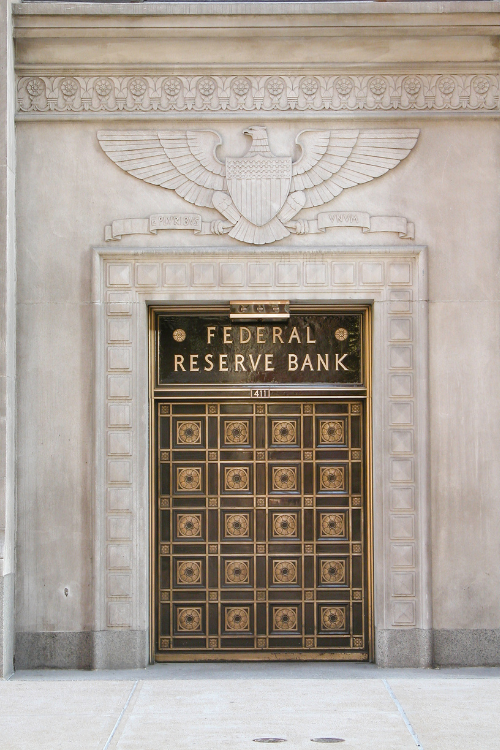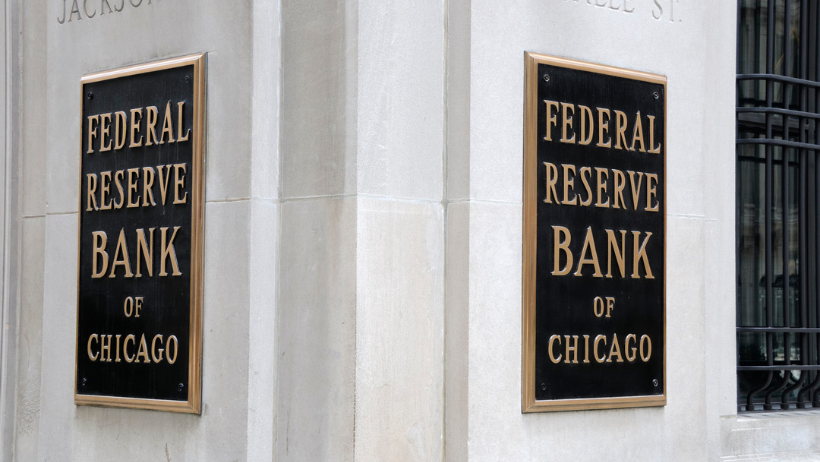The current Federal Funds Interest Rate affects the rate banks borrow money at. The Fed Funds Rate affects mortgage, credit cards and other loan interest rates. The higher the Federal Funds Rate is the more expensive it is to borrow money, where lower rates make loans cheap.
The current Federal Funds Interest Rate in November 2022 is 4%, up from 3.25%. The current Fed Funds Rates are rising. ScrubMoney talks about what affect this has on the economy and your personal finances.
What are Federal Funds Rates?

To understand fed funds and their role in the current interest rates for mortgages and other loans, you first need to understand what happens to your money when you deposit it in a bank. A commercial bank uses your deposit money to cover the interest paid for deposits and fund other loans among other things.
The bank must also keep a reserve amount of cash in the Federal Reserve to meet its needs. This is a mandated amount to cover withdrawals and the bank’s other obligations. It is set as a fixed percentage of deposits. The Federal Reserve sets the reserve ratio.
Fractional Reserve Banking Rates
This financial system is called fractional reserve banking.
When banks have done this they can then deposit any excess reserve over the mandated amount into a federal fund. These funds are held at regional Federal Reserve Banks. They loan these Federal Funds to other banks.
Who can Use Use Federal Funds?
The fed fund market in the U.S. includes a number of financial institutions that operate in the United States. Basically, banks. This includes commercial banks, branches of foreign banks, savings and loan organizations, and government-sponsored enterprises such as Fannie Mae and Freddie Mac.
Chartered Banks that are in good standing can participate in using Federal Funds.
Understanding the Fed Funds Rate
The Federal Open Market Committee (FOMC) is the policy-making branch of the Federal Reserve System. They set the feds fund rate, the reserve requirements, and the policy around fed funds. The FOMC uses key economic indicators to make decisions that affect the overall economy.
The feds fund rate is the target interest rate for the direct bank-to-bank lending of excess reserves. It is only a target rate as the Fed Reserve cannot make banks charge this rate.
What it does is adjusts the supply of money. This makes interest rates move in the direction of the target rate. If it increases money supply rates fall. If the money supply is decreased rates will go up.
The Federal Reserve also sets a discount rate which we discuss next.
The federal fund rate is significant to the economy overall as it affects monetary and financial conditions. It is also the basis for the interest charged to consumers on financing. Home loans – mortgages, especially.
What does the Federal Reserve do with this money?
Sometimes a bank will find that it does not have enough cash on hand to meet its reserve requirements. This is often due to an increase in lending or high levels of withdrawals. In these cases, the bank needs to borrow money to meet its daily reserve requirements. It can do this by borrowing from another bank directly or borrowing through a federal fund.
Excess reserve amounts are loaned out through the discount window. This is the interest rate, normally higher than the fed funds rate, that the lending bank will pay to access a fed fund loan. The fact it is higher than the fed funds rate means that banks are encouraged to lend to each other through this mechanism.

The loans from the fed funds are always available to the chartered banks typically as overnight loans, and require no collateral. The process of borrowing is also relatively simple. No negotiation and documentation requirements are not excessive. This makes them enticing to the bank that requires the loan.
The Federal Funds Rate is the Interest Rate
The federal funds rate is the interest rate that sets the base rate banks can borrow money at. In conjunction with the fed funds rate and the reserve requirement, Fed Funds are used by the Federal Reserve to manage liquidity. It aims to prevent high inflation and unemployment and uses the rate to expand or contract the economy.
If economic growth is the goal then the Fed Reserve will make it cheaper to borrow money by lowering the rate. This means both consumers and businesses borrow more and spend more.
To decrease inflation and slow the economy the Federal Reserve will raise the fed funds rate.
This is a balancing act but one the Fed Reserve attempts to control via the changing fed funds rate. Understanding how banking and economics work is important to growing your wealth.
Whether you are a business owner or an individual consumer, the Federal Funds Rate affects the interest rate you pay when borrowing money.
Home Mortgage Interest Rates are heavily influenced by the Fed Funds Rate.
The Federal Reserve and federal funds are central to the way our market economy works. Learn about it and take control of your future.
Information sourced from Trading Economics








